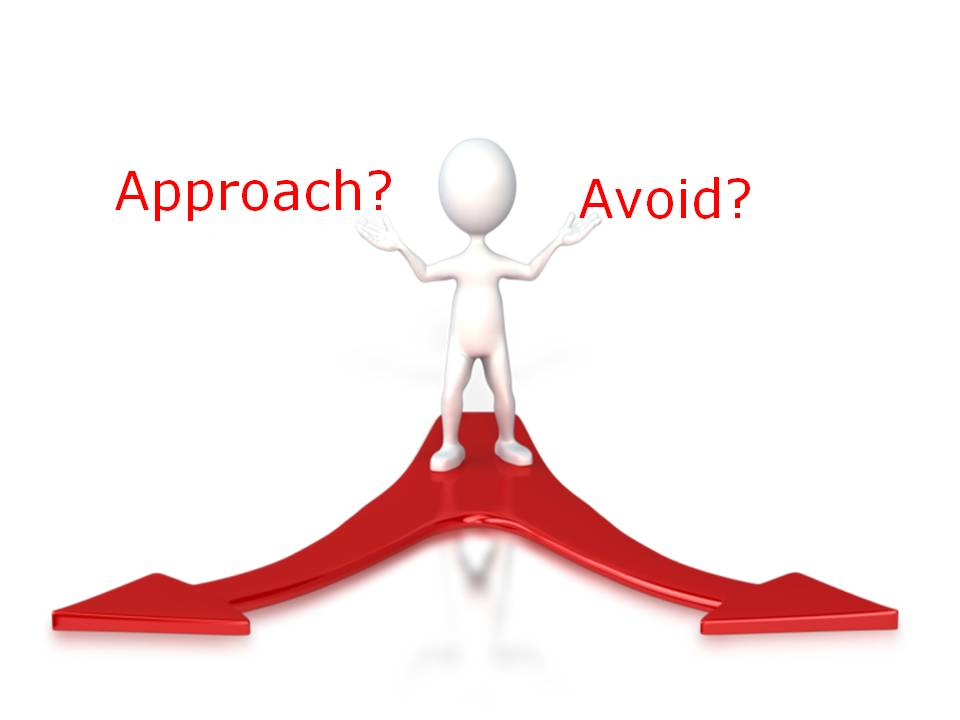Cognitive Dissonance

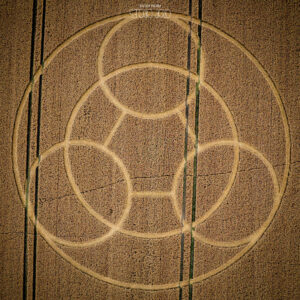
Upon discovering the news that the recent formation at Wayland’s Smithy was an exact copy of the logo used on the heading of “The Circular”, a magazine published by the centre for crop circle studies, I was reminded of the term cognitive dissonance, often quoted by the late Michael Glickman.
The term is, of course a psychological one and refers to a theory first presented by Leon Festinger in1957. Essentially, it attempted to clarify the conditions that motivate individuals to change their opinions, attitudes, beliefs or behaviours.
Cognitive dissonance happens when you hold two conflicting thoughts in your mind at the same time, like loving cows and hamburgers!
Now, as Michael was always keen to point out, one of the things about the crop circles is that they lead us to a place where we can easily find ourselves experience cognitive dissonance. In other words, the formations often present situations which can really do your head in!
But what if that’s the intent? I can hear Michael saying, with that effervescent twinkle in his eye.
If you had chance to read the recent paper by Dr Nick Kollerstrom published here on Against The Grain recently, you will, of course, be aware of the ongoing mystery of circles without a discernible centre. This is one of those amazing facts about crop circles which Michael first brought to my attention many years ago, and one that I have repeatedly included in my presentations ever since. Most especially because not only is this overlooked detail simply miraculous, it’s also ingenious and simple at the same time!
Allow me to explain myself…

When you look at a crop circle with untouched standing wheat at its centre, then you can be completely assured that NO ONE has walked out and stood there to be the fixed anchor point holding the rope, whilst someone at the other end of it, some 200ft or so away, tramples down the crop. If a person were to do this, it would always require trampling down and thus damaging the standing crop in order to get to the centre point.
Then, having done this, it would, of course, be completely impossible to stand the damaged crop back up again!
So, to be absolutely clear, if people had made it, there would have to be a track to a clearly defined centre.
The fact that there isn’t one is miraculous! It’s just that simple!
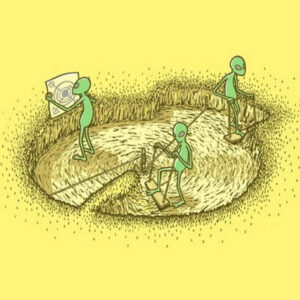
As Nick said in his article, this would be impossible on paper, let alone over hundreds of feet in a wheat field. But if anyone thinks they can do this, then just show us. In other words, please provide us with very ORDINARY evidence to substantiate such an EXTRAORDINARY claim. I’m not holding my breath for any takers.
Oh, and don’t forget that the vast majority of crop circles appear during the 4-5 hours of complete darkness we have here in the UK during summertime. Which of course, only adds weight to the argument against a human-made endeavour.
Getting back to the Wayland’s Smithy formation, we are once again presented with an immaculate formation, clearly laid with absolute precision and no discernible centre! For many, that’s the case closed on the origin. It has to have come from an unknown non-human intelligence.
But then the news comes in that the design is a replica of the logo taken from an old crop circle magazine, and we are once again thrown into the extremely uncomfortable world of cognitive dissonance!

Ok, so here we are, standing at the jaws of cognitive dissonance so to speak. This is when Michael would say, calm down dear, sit down, take a deep breath and have a cup of tea.
You know, when Psychologists were busy exploring this theory back in the day, they conducted extensive repugnant experiments on rats.
Well, of course, they did!!
In one of those tortuous tests, the poor old rats were given a metal bowl full of food, which had been electrified. Driven by hunger, the rat would step up to eat and get a nasty shock for his trouble, naturally causing him to recoil in extreme discomfort. Each time his increasing hunger drove him to try again, so the shock would send him reeling back. Over and over, this would continue to go on until, eventually, the rat would appear to come to an almost complete standstill.
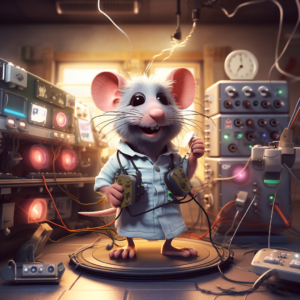
But upon closer examination, it could be seen that the rat was imperceptibly rocking backwards and forward. It turned out that the impulse to go towards the food and run away from the pain wasn’t resolved one way or another in the poor rat’s mind, and it ended up in this semi frozen state, twitching back and for with a manic stare on its face. The powerful polar opposite impulses to approach and avoid had quite literally driven the rodent mad!
In fact, my good friend and confidant Jon told me earlier that he was thrown into this very state of cognitive dissonance just yesterday. He’s been avidly following the UAP hearings in the US, and after listening to testimony from what he considered to be highly credible witnesses and also looking at very convincing video footage, he now feels comfortable that we do indeed have unknown craft flying around in our skies. Then, he watched some CGI experts de-bunk a bunch of these videos and immediately found his mind being thrown all around the place, as he put it. Maybe humanity is suffering karma for what we’ve done to all these poor rats over the years.

Nevertheless, it is this head space that is one of the reasons people don’t stay around the crop circle scene for very long. Because sooner or later, cognitive dissonance comes up, and that’s when the phenomenon really starts to stretch us!
In my own experience, it’s only by making space in these moments that provides us with a great deal more self understanding. It’s a bit like meditation, but not in the way that many people think about it.
What I mean by that is that I’ve heard so many people tell me that they need to meditate in order to relax. But for me meditation has rarely been very relaxing! Because it’s only when I try to stop and observe the machinations of my mind, that I get to see how chaotic it is in there, with thoughts swirling around, driving my feelings this way and that. The truth is that sitting down quietly with your own thoughts and emotions is actually really bloody difficult! Maybe this is why the attrition rate for a monks is so high!

Given the increasing madness of the world we all share, it’s not surprising that for lots of people, being inside your own head, even for short periods of time; can be very difficult! Perhaps this is why so many people want to “get out of it” so much more these days. Because to actually sit and hold two opposing and contradictory thoughts at the same time, and then observe yourself during this process can literally drive you mad!
Now I understand why my teacher used to say, this sort of work ain’t for sissies!
If we assume that Michaels hypothesis is correct, then logically, this raises the next hypothetical question. Why would an unknown non-human intelligence want us to go to such an uncomfortable place in our minds?
Are they really just trying to do our heads in?
The truth is that each of us hold dozens, if not hundreds, of conflicting thoughts such as these in our minds, but when they surface into our conscious awareness, very sophisticated systems of avoidance kick into action. Over the years a lot of us develop strategies and get superb at avoiding those hot potatoes. In fact, many of us have become so good at it, that we very often don’t even notice when we completely contradict ourselves! Someone once said that in reality most people would rather remain ignorant of this self deception, and if you’re in any doubt about that then try and take it away from them and see how they react towards you!
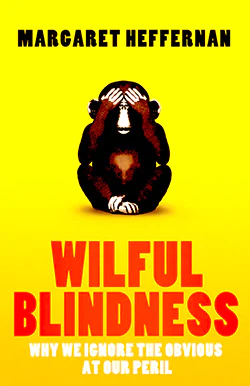
I read a wonderful book called “Wilful Blindness” by a British author Margaret Heffernan several years ago. In it she quotes several spine chilling examples of the lengths we humans can go to in order to deceive ourselves. It’s both enlightening and disturbing at the same time. Especially disturbing when it causes one to look in the mirror at our own inner contradictions.
It doesn’t take someone from the Vienna set to tell us that prolonged exposure to this sort of mindset is tortuous if not handled correctly. This is why several researchers, including myself, have always felt that the man made explanation is a perfect way out for those who just can’t stand the heat of this particular kitchen.
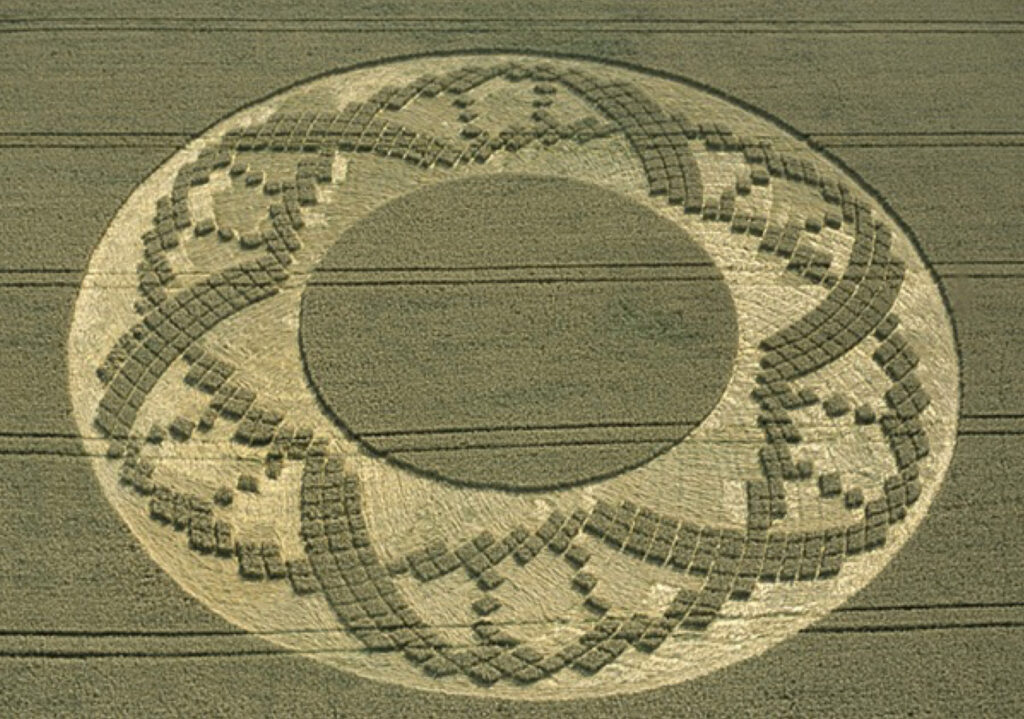
In years past, we have had a great many beautiful designs imprinted into crop fields, and many of them without discernible centres. But there’s no denying that the 2023 season has definitely pushed this aspect of the crop circle mystery right under our noses.
Something else Michael said repeatedly, was that we should also consider that we are dealing with two mysterious phenomena here. Phenomena A is the crop circles in the fields, whilst phenomena B is our reaction to them!
So, how do you respond to this? What are your thoughts and feelings as a result of this latest development? Try and sit with it for a while if you can. You may learn something about yourself.
Another consistent theme of the crop circle narrative is the phrase “We Oppose Deception”, which has been repeated several times in a several of clever ways.

I think that there’s an interesting discussion to be had about why an unknown non-human intelligence would want to perplex us in such a fashion. Is it a clever way to encourage us to look inside ourselves just a little bit deeper, but at the same time, provide us with a way out if it all gets too overwhelming? What do you think?
Several years ago, I determined the crop circles can be placed into five major categories, which are: Geometry, Religious/Philosophical symbols, insects and animals, astronomical symbols and finally those that are completely abstract.
As both the categories of geometry and religious/philosophical symbols fall under the headings of cosmology/consciousness/metaphysics etc, then in my research, this has caused me to spend a great deal of time considering the philosophical concept that compares God, or the creator, to the centre of a circle. I use the word creator here in place of the highly charged word God, because what I’m proposing here is much more about cosmology and philosophy as opposed to organised religion. However, regardless of the actual word, this idea of associating the divine with a circle and its centre has been a prominent theme in various religious, philosophical, and spiritual traditions.

In higher levels of practice in Yoga and Tai Chi, connecting with our physical centre of gravity paves the way for moving toward a deeper understanding of our metaphysical or spiritual centre. Yoga literally refers to “yoking” the mind to the source of Divinity, and is the process of “intentional stopping of the spontaneous activity of the mind-stuff.” The word Yoga is derived from a Sanskrit word meaning “to yoke” or “to unite” to yoke or unite your being with the infinite, to Brahman.
In the image, you can see in the asana known as hollow back pose (Pincha Mayurasana) that the centre of gravity is located outside of the physical body.
The concept of God being the centre of a circle often symbolises the idea of divine unity, perfection, and harmony. In this metaphor, the circle represents the universe or existence, and God, as the centre, is the mysterious source from which everything emanates. The circle’s circumference represents the limits or boundaries of creation, while its centre represents the divine essence from which all creation emerges and revolves around.
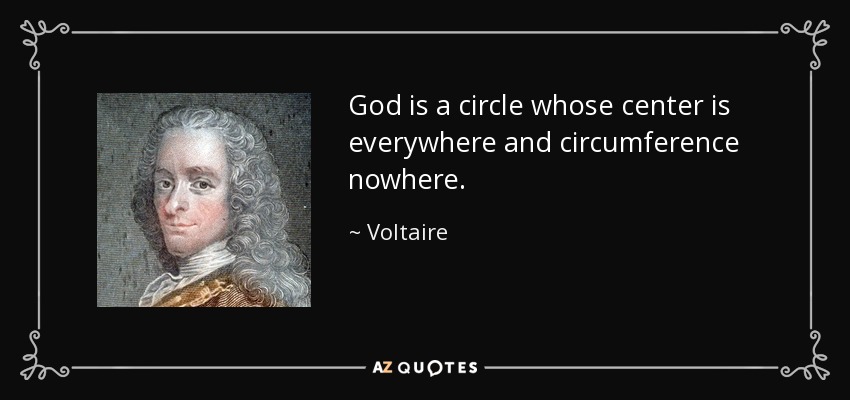
The notion of God as the centre is found in different religions and philosophical contexts, and we can interpret it in various ways depending on one’s beliefs and cultural background.
In Christian theology, we often consider God the centre of creation and the source of all existence. God’s divine will and providence are believed to guide and sustain everything in the universe.
In Hindu philosophy, the concept of ‘Brahman” is often associated with the centre of the cosmic circle. Brahman is considered the ultimate reality and the source from which everything arises.
In Islamic thought, the concept of Tawhid emphasises the oneness of God and the idea that everything is interconnected and dependent on God as the centre.
In the philosophy of Plato, the “One” represents the ultimate source of reality and the centre from which all forms and ideas emanate.
In Taoist philosophy, the Tao is often compared to the centre, representing the underlying principle that unifies and governs the universe.
These are just a few examples, there are many other interpretations and variations of this idea in different belief systems. The concept of God as the centre of a circle serves to convey the notion of a unified and harmonious cosmos, with a divine presence that holds everything together. It also highlights the idea of interconnectedness and the belief that everything is connected to the divine source.
For me, there is a connection between the deep introspection caused by the aforementioned cognitive dissonance and the concept of “Know Thyself”.
“Know Thyself” is an aphorism that dates back to ancient Greece, often attributed to the philosopher Socrates. This idea is rooted in the philosophical tradition and has been a central theme in various cultures and belief systems throughout history.
At first glance, the connection between “God as the centre of a circle” and “Know Thyself” may not be immediately apparent. However, upon closer examination, there are some profound connections and insights that can be drawn.
The concept of God as the centre of a circle emphasises unity and interconnectedness. Similarly, “Know Thyself” invites individuals to explore their own inner being and recognise their inherent connection to the larger universe or divine reality. Understanding oneself involves recognising that we are part of a greater whole, and our actions and choices can influence the world around us.
“Know Thyself” is often interpreted as an invitation to explore one’s own soul or inner self, seeking wisdom and understanding within. This inner journey can lead to a deeper connection with the divine or spiritual aspects of one’s being. We can see the concept of God as the centre of a circle as an external representation of this inner journey, where the divine essence is recognised as the centre of existence, and knowing oneself becomes a path to realising that connection. The pursuit of self-knowledge involves understanding our own thoughts, emotions, biases, and limitations. By doing so, we can transcend the ego and develop a more profound sense of self-awareness and humility. This recognition of our own limitations can also lead to a greater recognition of a higher power or divine presence beyond our individual selves.
In my view, both concepts are connected to the idea of pursuing wisdom and virtue. Understanding one’s place in the universe and recognising the divine centre can inspire individuals to live virtuously and align their actions with higher principles.
Therefore, as the spiritual teachings tell us, exploring the relationship between God/creator as the centre of a circle and knowing oneself can lead to a deeper sense of purpose and meaning in life.
Similarly, understanding our connection to the divine and larger cosmos can provide a framework for living a meaningful and fulfilling life.
In summary, I’m connecting the dots between crop circles, which carry the potential confound us deeply and potentially cause us to experience cognitive dissonance, together with the concepts of “God as the centre of a circle” and “Know Thyself”. As I see it these three items are complementary and interconnected. They encourage individuals to explore their own inner being, seek wisdom and understanding, and recognise their place in the broader context of the universe and the divine.
I realise, of course, that this all very deep and philosophical, but such is my want in questioning the nature of human existence. But if like me, you consider we should explore what it is we are being asked to consider from the narrative of the crop circles, then these considerations are what I would want to bring to the table.
Written by Gary King for Against the Grain.
Images courtesy Frank Lauman, Nick Bull, Steve Alexander. Consiglieri: Gerard Kenny, Jonny Wine, Aaron King.

